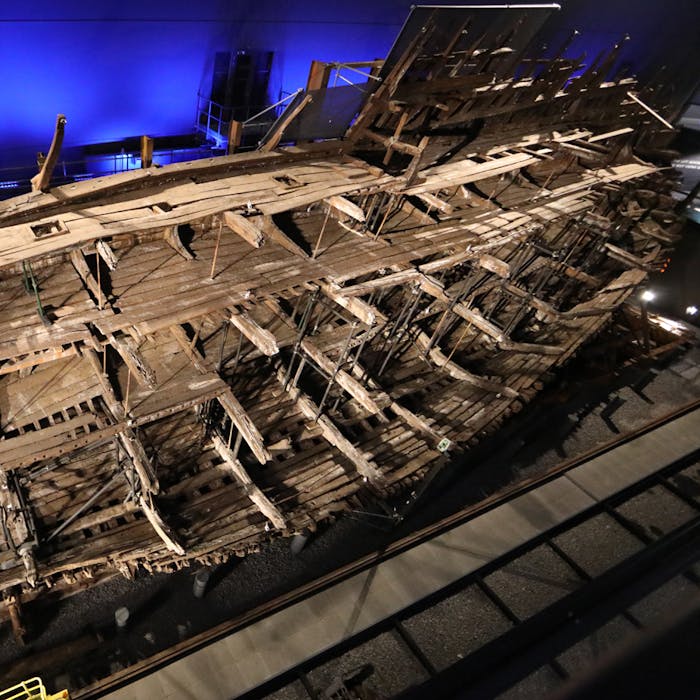
The Mary Rose, Henry VIII's lost warship, raised in 1982
The Mary Rose - Henry VIII's flagship warship, was lost in the Solent in 1545. She was recovered in 1982 in a highly complex raising operation, and has been on display to the public since then at the Portsmouth Historic Dockyard whilst undergoing restoration.
The Mary Rose is a carrack-type warship of the English Tudor navy of King Henry VIII. She was launched in 1511, and served for 33 years in several wars against France and Scotland. After being substantially rebuilt in 1536, she saw her last action on 19th July 1545. She led the attack on the galleys of a French invasion fleet, but sank in the Solent, the strait north of the Isle of Wight.
The wreck of the Mary Rose was discovered in 1971 and was raised on 11th October 1982 by the Mary Rose Trust in one of the most complex and expensive maritime salvage projects in history. The excavation and raising of the Mary Rose was a milestone in the field of maritime archaeology.
For three decades since being raised from the Solent, the hull of the ship has been continuously sprayed, first with chilled fresh water to remove salt and then with Polyethlene Glycol (PEG), a water soluble wax which prevents shrinkage of the timbers, having been submerged underwater for almost 500 years.
The surviving section of the ship and thousands of recovered artefacts are of great value as a Tudor-era time capsule.
The finds include weapons, sailing equipment, naval supplies, and a wide array of objects used by the crew. Many of the artefacts are unique to the Mary Rose and have provided insights into topics ranging from naval warfare to the history of musical instruments.
The hull and its other remains have been on display at the Portsmouth Historic Dockyard while undergoing restoration. An extensive collection of well-preserved artefacts can be seen there at the Mary Rose Museum, built to display the remains of the ship and its artefacts.
The Mary Rose was one of the largest ships in the English navy through more than three decades of intermittent war, and she was one of the earliest examples of a purpose-built sailing warship. She was at the forefront of new technology, armed with new types of heavy guns that could fire through the recently invented gun-ports.
Several theories have sought to explain the loss of the Mary Rose, based on historical records, knowledge of 16th-century shipbuilding, and modern experiments, but the precise cause of her sinking is still unclear.
Further reading
Links to external websites are not maintained by Bite Sized Britain. They are provided to give users access to additional information. Bite Sized Britain is not responsible for the content of these external websites.
